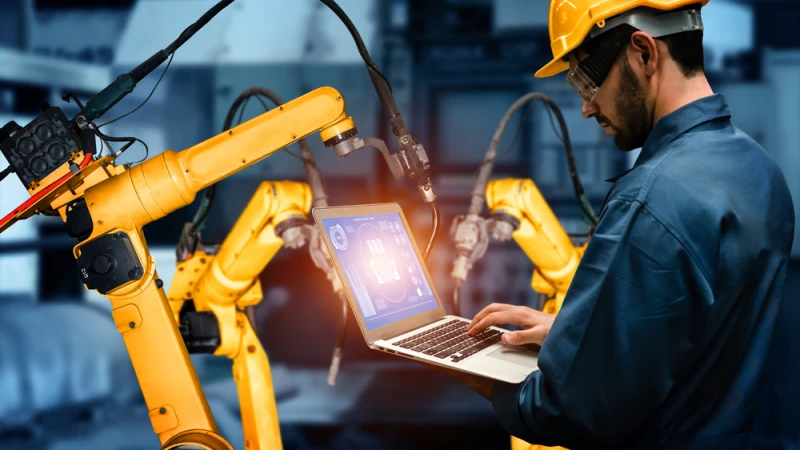The mining industry is undergoing a rapid transformation. As a foundational pillar of the global economy, the industry has long been reliant on purely physical systems for its operations. However, modern mines are beginning to adopt increasingly sophisticated technologies, including AI-driven systems, sensors, and remote monitoring, to dramatically improve safety, efficiency, and sustainability. These technologies are revolutionizing the mining industry, signaling a transformation that shows no signs of slowing down.
Consequently, this digital transformation is also introducing new risks to cyber-physical systems (CPS). Chief among these is the convergence of operational technology (OT) and information technology (IT). While this integration creates new efficiencies, it also opens the door to threat actors taking advantage of an expanded attack surface. This makes mining operations vulnerable to a new wave of cyber threats, and necessitates a specialized response that can effectively detect, respond to, and remediate such attacks.
Managing New Mining Efficiencies and Exposures
IT and OT environments have historically been isolated from one another, with IT in charge of powering business operations, data processing, and related areas. OT, meanwhile, would handle physical equipment. For mining, this means drills, conveyors, processing plants, and critical safety systems. The separation of these systems resulted in limited connectivity and a lack of real-time insights, both of which are critical to have in today’s connected world.
However, the continued drive for real-time insights and improved efficiency has fundamentally changed this dynamic. This convergence of IT and OT has resulted in advancements such as automated processes, predictive maintenance, and sensors from remote sites feeding data into enterprise networks. While the benefits of connecting the two previously disparate worlds brings huge benefits, it also introduces new risks to both. Whereas the digital realm was once the prime target for cyber criminals, the physical world is now just as vulnerable, putting everything from programmable logic controllers (PLCs), remote operating systems, and worker safety in potential jeopardy.
Taking on the Expanded Attack Surface Challenge in Mining
Like many other industries within critical infrastructure, the expanded attack surface dilemma in mining is often inadvertently complicated by a few factors:
Remote access tool sprawl
Previous Team82 research has shown that organizations often rely on anywhere from six to as many as 16 individual remote access tools for tunneling into networks. While most of this access is typically legitimate, the sheer number of these tools being used by third parties can expand the number of access points an attacker can leverage to reach the network.
Legacy OT systems
Many mining operations still rely on legacy OT systems that were built decades ago, long before connectivity and cybersecurity were considerations. These systems have proprietary protocols and network architectures that are incompatible with modern IT solutions, making them difficult to integrate and secure today.
Rugged physical environments
Due to the very nature of the demands of the industry, mining sites are often located in rugged, isolated, and otherwise geographically dispersed environments. This complicates the implementation and maintenance of robust cybersecurity measures.
What’s more, these rugged environments are inherently dangerous for personnel safety. Cyber incidents targeting critical mining systems such as ventilation, haulage, and processing can result in serious physical harm, environmental damage, or catastrophic system failures. This elevates cybersecurity from a purely IT issue to a critical enabler of personal safety and operational resilience in the mining industry.
As so many other industries are discovering, these factors can combine to make an appealing target for attackers. With unpatched vulnerabilities or misconfigurations creating risky security exposures, attackers can use off-the-shelf brute force tools to gain unauthorized access to enterprise networks. Once they’re inside, it can be easy to move laterally across the network and deploy ransomware or other exploits that could cause severe damage to critical processes, and even endanger public safety. And the consequences of this—from reputational damage to financial losses and operational downtime—can be quite profound.
Finding a Purpose-built Solution to Protect Mining OT
With all these dangers now very prescient in the age of IT/OT convergence, CISOs have to take a purpose-built approach to cybersecurity. In most cases, that means fundamentally reassessing the organization’s cybersecurity posture, Here are some steps to get off the ground:
Comprehensive Visibility
If you can’t see it, you can’t protect it. Accurately identifying all OT and industrial control system (ICS) assets is essential in today’s new threat landscape. A tool that provides this level of deep visibility is crucial for effective threat mitigation and remediation, especially on networks using legacy equipment.
Exposure Management
Beyond simply identifying each asset, prioritizing the ones with the greatest potential business impact is key. It's important for this to be done in a way that highlights the specific attack vectors relevant to each asset, allowing mining companies to address these vulnerabilities effectively.
Secure Remote Access
A huge part of this purpose-built strategy is to find a secure remote access solution that’s specifically tailored to OT environments. Generic VPNs and jump servers are simply not enough anymore. Ideally, this solution would also provide your organization with actionable recommendations based on the unique threats to each asset in your OT environment.
Additionally, a secure remote access solution for protecting a mining environment should provide:
Granular access controls to limit authorized access and permissions to only those users who require it to do their jobs.
Session monitoring and recording to maintain detailed audit logs and the ability to use “over-the-shoulder” monitoring to instantly shut down suspicious activity.
OT protocol support to ensure seamless and secure access to devices without disruption or interruptions to operations.
Building Mining Resilience with Claroty
Make no mistake, the challenges presented by the IT/OT convergence are as unprecedented as they are crucial to address. Securing these vital cyber-physical systems requires much more than just relying on IT-centric tools; it demands a purpose-built solution that’s tailored to the unique challenges of an OT environment.
Claroty empowers mining operators to overcome these challenges and secure their operations. With comprehensive asset visibility, risk management based on device priority, and granular access controls, the Claroty Platform delivers a secure access solution that can defend critical infrastructure against an evolving threat landscape.
Explore the platform here or request a demo to learn more.













